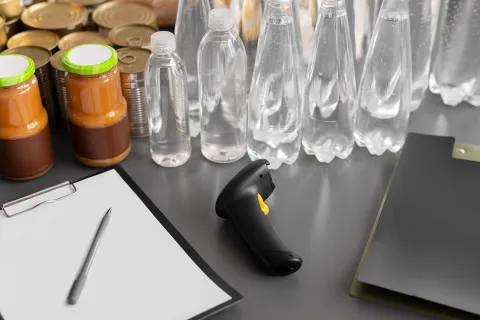Compliance with EU Detergents Regulation (EC No. 648/2004) is essential for ensuring the safety, transparency, and environmental responsibility of household cleaning products, marketed in the European Union. Additionally, it is important to comply with EU Detergents Regulation, to place products legally on the market, ensuring Cleaning Products Compliance, and sustaining consumer trust. Here are the key steps to be followed by manufacturers for understanding How to comply with EU Detergents Regulation and stay compliant.
1. Biodegradability requirements for detergents under EU law
Biodegradable Surfactants is one of the key requirements for the regulation— the active cleaning agents in detergents for Detergent Compliance EU. When exposed to oxygen, these substances must break down by at least 60% within 28 days. Some cases require additional testing, particularly if the product is designed for industrial or professional use.
2. Safe Ingredient Selection
The regulation imposes limits on certain ingredients, particularly focusing on those products which pose risk to the environment or human health. For instance, phosphates and phosphonates have been subjected to heavy restriction, for consumer laundry and dishwasher products. Safety Assessment must be conducted for every ingredient, to protect consumers and the environment from the potential harm.
3. Labeling rules for household cleaning products in the EU
Clear and informative labeling is another core requirement and under the regulation. Each detergent product must display the following for Accurate Labeling and Consumer Information:
- A complete list of ingredients to keep consumers informed.
- Dosage instructions to help users avoid waste and ensure safe use.
- Allergen information, particularly if allergens are present at a higher percentage, above 0.01%.
- Hazard symbols and Precautionary statements must be aligned with the CLP Regulation (EC No. 1272/2008).
Products containing enzymes, optical brighteners, or disinfectants must clearly state these on the label.
4. Safety Data Sheets (SDS) for Hazardous Products
SDS must be provided to professional users and distributors, in case a detergent is considered hazardous, under the CLP Regulation. Safety Data Sheet outlines hazards, safe handling guidelines, storage requirements, and emergency measures.
5. Online Ingredient Disclosure
Manufacturers must also make a complete ingredient list available online. This list should use either INCI names (International Nomenclature of Cosmetic Ingredients) or widely recognized chemical names.
6. Compliance with Related EU Regulations
In addition to the Detergents Regulation, products must also ensure compliance wit
- REACH Regulation for chemical safety assessments
- Biocidal Products Regulation (BPR) for disinfectants
- Packaging and Packaging Waste Regulation (PPWR) for sustainable packaging
Conclusion
Manufacturers can easily understand how to comply with EU Detergents Regulation, by ensuring biodegradability, safe ingredients, transparent labeling, and proper documentation. For businesses seeking expert guidance, Freyr offers regulatory support to assist with formulation reviews, dossier preparation, label and EU Ecolabel compliance, helping brands achieve seamless market access in the EU.










